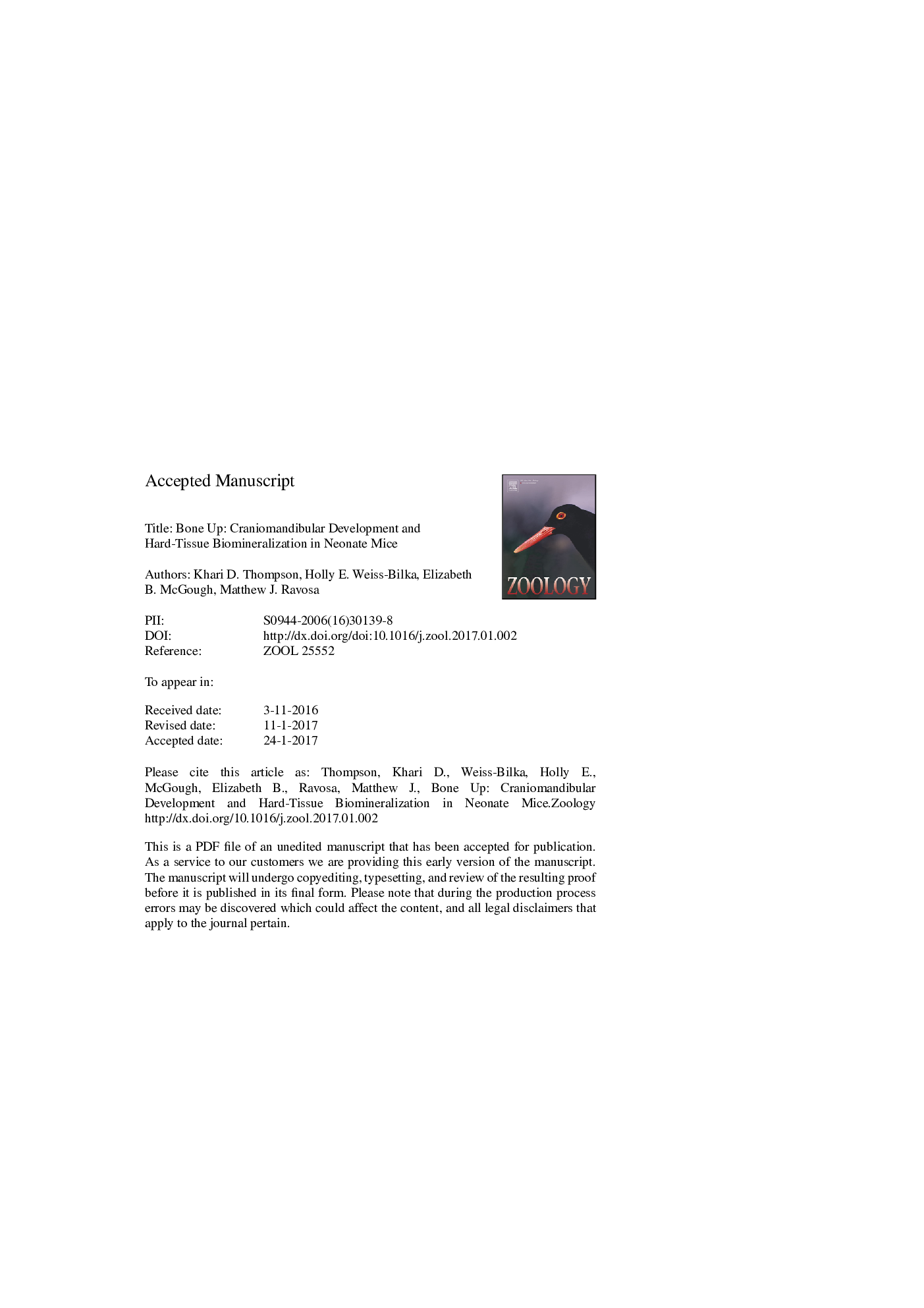| Article ID | Journal | Published Year | Pages | File Type |
|---|---|---|---|---|
| 8627210 | Zoology | 2017 | 31 Pages |
Abstract
The presence of regional variation in the osteogenic abilities of cranial bones underscores the fact that the mechanobiology of the mammalian skull is more complex than previously recognized. However, the relationship between patterns of cranial bone formation and biomineralization remains incompletely understood. In four strains of mice, micro-computed tomography was used to measure tissue mineral density during perinatal development in three skull regions (calvarium, basicranium, mandible) noted for variation in loading environment, embryological origin, and ossification mode. Biomineralization levels increased during perinatal ontogeny in the mandible and calvarium, but did not increase in the basicranium. Tissue mineral density levels also varied intracranially, with density in the mandible being highest, in the basicranium intermediate, and in the calvarium lowest. Perinatal increases in, and elevated levels of, mandibular biomineralization appear related to the impending postweaning need to resist elevated masticatory stresses. Similarly, perinatal increases in calvarial biomineralization may be linked to ongoing brain expansion, which is known to stimulate sutural bone formation in this region. The lack of perinatal increase in basicranial biomineralization could be a result of earlier developmental maturity in the cranial base relative to other skull regions due to its role in supporting the brain's mass throughout ontogeny. These results suggest that biomineralization levels and age-related trajectories throughout the skull are influenced by the functional environment and ontogenetic processes affecting each region, e.g., onset of masticatory loads in the mandible, whereas variation in embryology and ossification mode may only have secondary effects on patterns of biomineralization. Knowledge of perinatal variation in tissue mineral density, and of normal cranial bone formation early in development, may benefit clinical therapies aiming to correct developmental defects and traumatic injuries in the skull, and more generally characterize loading environments and skeletal adaptations in mammals by highlighting the need for multi-level analyses for evaluating functional performance of cranial bone.
Keywords
Related Topics
Life Sciences
Agricultural and Biological Sciences
Animal Science and Zoology
Authors
Khari D. Thompson, Holly E. Weiss-Bilka, Elizabeth B. McGough, Matthew J. Ravosa,
